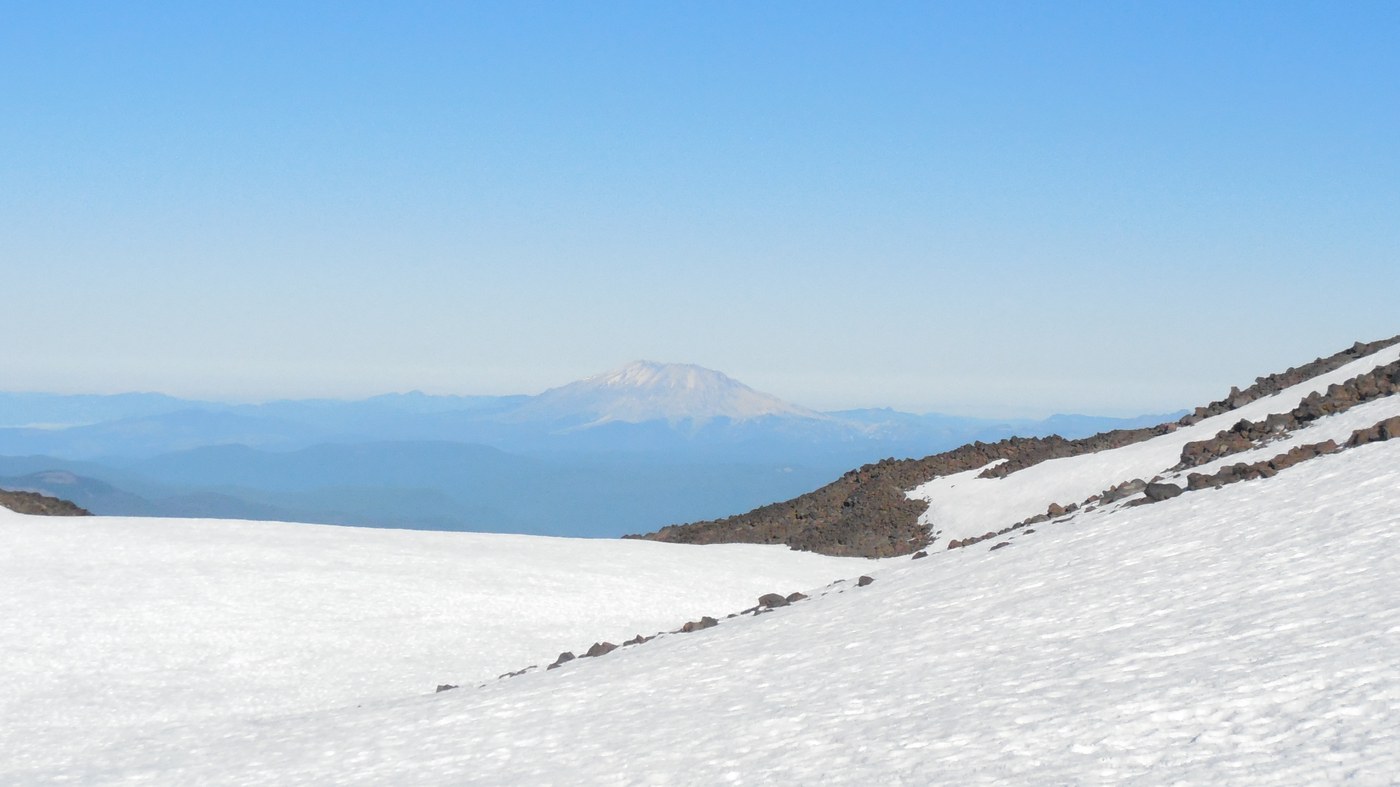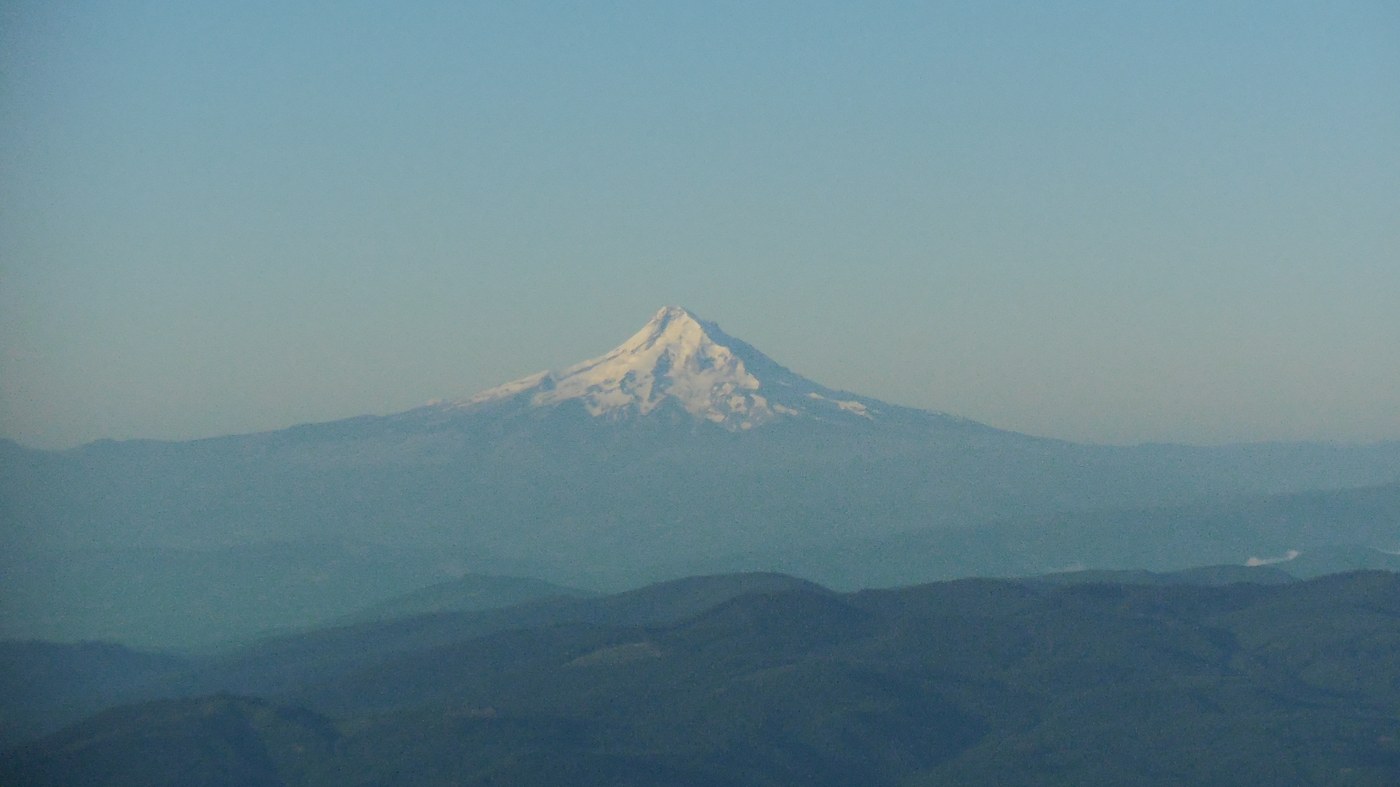
We had been wanting to try the non-technical route of Adams before the busier summer weekends, and the fantastic weather forecast for this weekend was the perfect opportunity. We were going to do the usual 2-day trip, but decided to go for a one-day ascent despite not knowing anyone who had tried it personally, and seeing few one-day trail reports. Leaving Seattle at 12:45 (seems like the rest of the city had the same idea to get out of town early for the weekend - what traffic!) we were able to get to Hood River in time for a nice dinner and we spent the night at the Trout Lake Motel on Highway 141, which is a nice, quiet little place to get a good night's sleep prior to a long day. The self-serve registration at the Mt. Adams Ranger station is easy, and we took care of that the night before.
The drive from Trout Lake to the Cold Springs trail head takes about 45 minutes. The unpaved road is pretty rough, but our friend's Audi hatchback managed to make it without too many scrapes, and we arrived at a nearly full parking lot at 4:45 am. There were several other parties starting at the same time, and it was already quite light out. The beginning of the hike follows an old logging road and goes through a landscape of clear-cut and burnt trees before finally entering a bit of forest and finally up on the rock of the mountain. Snow started at about 7,000 feet and because it was so compact, we (and everyone else) put on crampons right at the snow line. We totally agree with recent reports that crampons are a must, and if not an ice-axe, then at least poles. We used poles all the way up and felt very secure with the crampons. We did see a few people without crampons, but it's just not worth taking the risk, and it has to be much less enjoyable going up the mountain having to worry about your footing. The route is very easy to follow, especially given so many others were on the mountain (we estimate at least 150 people going up, going down or camping). We got to the Lunch Counter (9,200 feet or so) in about 3 hours and 20 minutes and that's where the wind really picks up. All the camps were situated in the rocks to stay out of the wind. We can see why it would make sense not to get up to this area too late for camping - the area is quite large, but the "good" spots most certainly go quickly. The wind made cold-weather gear a must for the remainder of the climb up, which in these conditions is pretty straight-forward with the compact snow and bit of ice. There were climbers and skiers going up at different rates of speed, but the nice thing about this route is that the path is pretty wide, so there were no traffic jams to contend with. People who had camped or started very early were starting to come down, and no one was glissading at this point, stating it was too icy. We did run into one person who hurt his ankle trying to glissade, but he was wearing crampons while attempting it.
Elevation effects everyone differently, and one challenge (at lease for us) with climbing the mountain in one day is that you don't have a chance to acclimate, while camping at Lunch Counter allows the body to adjust overnight. The push up to Pikers Peak (11,600 feet) went a little slower for us and many others as it involved taking as many steps as possible and then stopping to catch one's breath. We made sure we were very hydrated and ate well prior to the hike so we didn't experience headaches or any other symptoms other than some shortness of breath. After Pikers Peak, the summit still looks a long ways away, but the prize sneaks up on you pretty quickly as you put your head down and keep heading up, after the little descent beyond Pikers. The wind on the summit was, of course, extremely strong and after the climbers took the obligatory quick summit photos (great views of Hood, St. Helens and Rainier), those who wanted to spend time at the top huddled behind a wind break. We reached the summit in just under 6 1/2 hours and spend nearly an hour at the top enjoying, lunch, the views and conversation with other successful climbers. It was nice share stories and to meet so many people who came from all over the west just to climb Mt. Adams.
We left the summit at about 12:15 and the snow was starting to soften. The skiers and boarders seemed to have good conditions and were enjoying themselves, and we decided to test out the glissade chutes. Note that they are running quite fast - we donned helmets, removed our crampons, and of course had our axes to regulate speed, but we were still really moving on a couple of them. We had one continuous glissade from Pikers that must have been nearly 1,000 feet. It's always alot of fun going down so quickly while watching people slowly go up the mountain, pausing to watch you slide past. There are a lot of warnings about glissading on Adams and they are well-stated. We encountered another climber who hurt his knee pretty badly, and I made the mistake of being too lazy to put gaiters on got some pretty nasty ice scrapes on the calves. Coming down we saw a lot of groups coming up to camp at Lunch Counter. Some more snow definitely melted yesterday, so the snow line rose a bit for our trip out, and we made it back to the parking lot in just over 3 1/2 hours (3:55 pm).
We had dinner in Portland and made it back to Seattle by 10:30 pm. Overall, we were very happy to have been able to summit the mountain in a day. Several good training hikes before, packing relatively light (cold weather gear, 4 liters apiece of water, food, and necessary equipment and first aid), and getting an early start were all critical factors in our success. This route on Mt. Adams is a great way to get to a pretty high elevation without having to rope up, but still one gets to practice crampons and ice-axe skills .






Comments